Accelerate your HubSpot ROI with these top tips
As an all-in-one solution, the HubSpot CRM platform includes marketing, sales, customer service and operations software – with a CRM at its core. As you know, the features couldn’t be more comprehensive.
Within the Marketing Hub, you’ve likely been managing your website, optimising your content, coordinating your email outreach, and promoting content on your social media channels. You’ve been utilising the topic cluster tool to help improve your website’s search rankings and generate better qualified leads. Plus, once you have those leads, HubSpot has the tools to track, nurture and contact them at the right time in their research process, then makes it easy to analyse your results and review your process.
On the other hand, if you’re using the Sales Hub, you’re likely using the CRM platform and sales enablement tools to refine and streamline your sales process, boost productivity, shorten deal cycles, manage your pipeline(s) more effectively and make the sales process more human.
The truth is expectations and reality don't always fully align when it comes to software purchases. Sometimes you get different results than you expected. If you’re reading this blog, that’s likely the case for you. Not to worry, we’ve compiled a list of top tips to help you maximise your return on HubSpot investment.
Measure the right KPIs and establish goals
To optimise performance and maximise your return on your HubSpot investment you need to monitor multiple performance metrics. However, before you can choose what metrics to measure, you should have clearly defined business goals. When you know what matters most to your business, you can then determine the metrics and key performance indicators (KPIs) that will help you achieve those business goals. Tracking KPIs on a monthly basis will help you decide if your HubSpot efforts are working.
But some metrics are more telling than others:
- Organic website traffic, which can be found in the HubSpot Sources report, is a better indicator of SEO effectiveness than total web traffic
- Social media engagement, rather than the number of followers, tell you which content is resonating with your audience so you can share more of it
- Marketing qualified leads, as opposed to just total leads, helps you gauge whether you’re attracting the right prospects
- Visits-to-contacts conversion rate, rather than contact count alone, is a better indicator of the quality of your landing pages and the relevance of your content to your target audience
However, it’s not enough if you just know what KPIs you should be monitoring. HubSpot users that have the most success identify their long-term marketing goals using the SMART goal framework.
A SMART goal stands for:
- Specific - Your goal should be unambiguous and communicate what is expected, why it is important, who's involved, where it is going to happen, and which constraints are in place
- Measurable - Your goal should have concrete criteria for measuring progress and reaching the goal
- Attainable - Your goal should be realistic and possible for your team to reach
- Relevant - Your goal should matter to your business and address a core initiative
- Timely - You should have an expected date that you will reach the goal
By establishing your SMART goals upfront and focusing on the right KPI metrics, you’ll be able to determine whether or not your HubSpot efforts are working.
Align your sales and marketing teams
Now that you have established your SMART goals and what KPIs you should be monitoring, it’s time to make sure there aren’t any internal barriers to achieving your goals. By this we mean ensuring that there is no misalignment between your sales and marketing teams. Use this centralised view to analyse reports built from all aspects of your CRM.
“Not aligning your sales and marketing team isn’t just unhelpful for the customer – it’s also damaging your bottom line.”
– HubSpot
Aligning your sales and marketing teams is a crucial step to ensure you maximise your return on HubSpot investment. Both your marketing and sales teams have the same goal of driving sales and revenue, so it is crucial to keep them in sync. Sales and marketing alignment is potentially the largest opportunity for improving business performance today. When marketing and sales teams unite around a single revenue cycle, they dramatically improve marketing return on investment (ROI), sales productivity and, most importantly, bottom line growth.
To effectively bring your sales and marketing teams together:
- Both the sales and marketing teams must have a shared vision, shared goals, and shared understanding of the KPIs needed to achieve them
- Both teams must have the resources to achieve their goals, from staff to software
- Both teams must employ effective feedback loops that drive informed processes
Reporting, reporting and reporting
Once you have established your SMART goals and what KPIs you should be monitoring and have achieved alignment between your marketing and sales teams, you should leverage the power of HubSpot’s reporting capabilities. Reporting is an important component of any business that affects decision-making and goals. Without the correct reports and analytics, how are you going to report on what’s working, or better yet, how you are going to prove your return on HubSpot investment?
A convenient place to keep track of your data in HubSpot is on your dashboards.
With your marketing team working one way and the sales team another, it’s no surprise that there can be some disconnect between the two, which we know can cause further repercussions. With the aid of HubSpot reports and dashboards, you can ensure each team are held accountable for their actions.
Here’s a list of four of our most favourite reports you can create in HubSpot and add to a dashboard:
1. Conversions by original lead source – the easiest way to measure your marketing efforts and ad spend is to tie each conversion and each closed deal back to its original lead source or campaign.
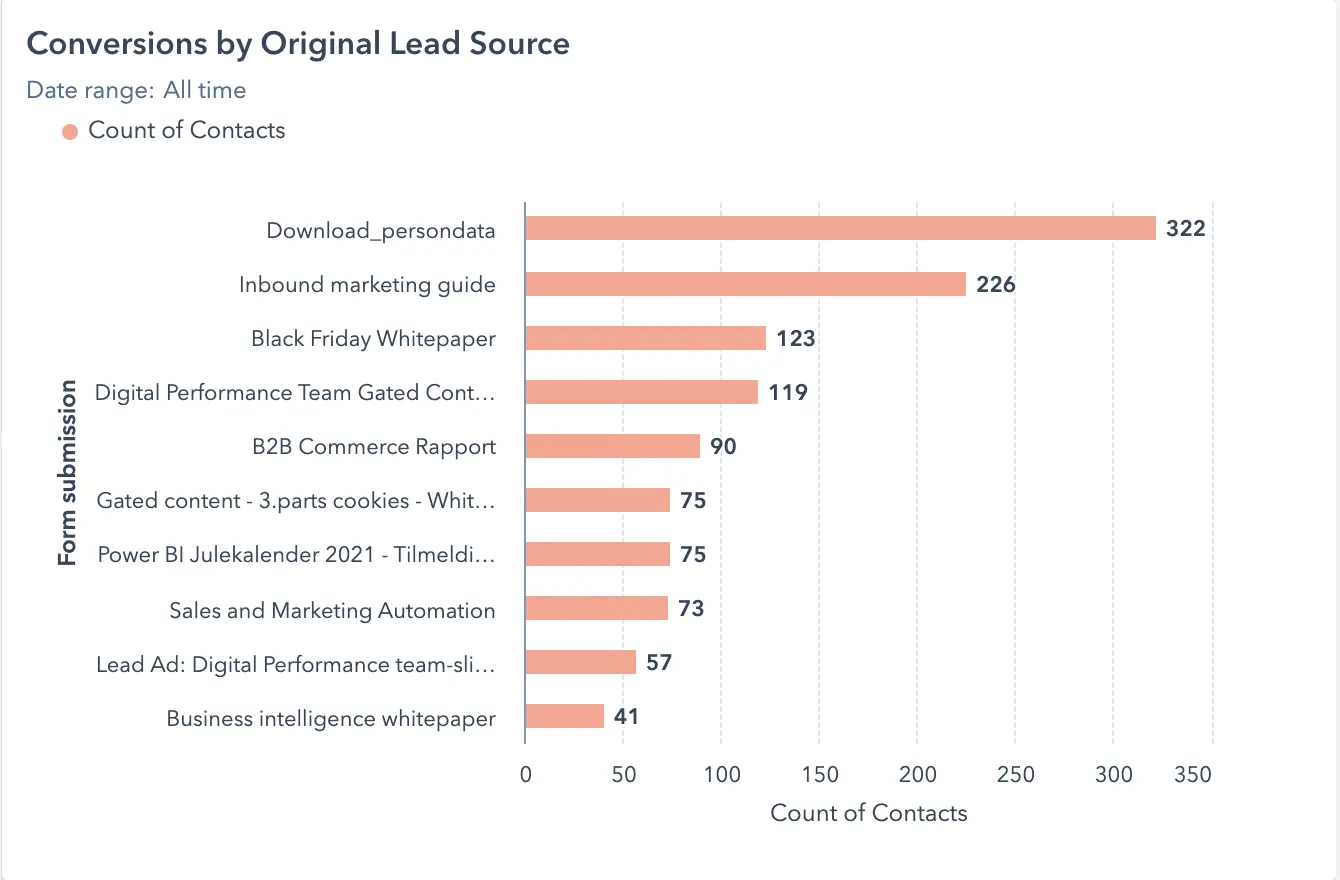
2. Conversion rates by lifecycle stage – this report tracks the conversion rates between each lifecycle stage (Subscriber, Lead, MQL, SQL, Opportunity, Customer, Evangelist and other). This report can be extremely insightful when looking to identify exactly how many leads you will need to hit your lead generation and revenue goals. However, if you have not properly defined what each lifecycle stage means to you as a business and how each lifecycle stage is set, this report will yield you no value.
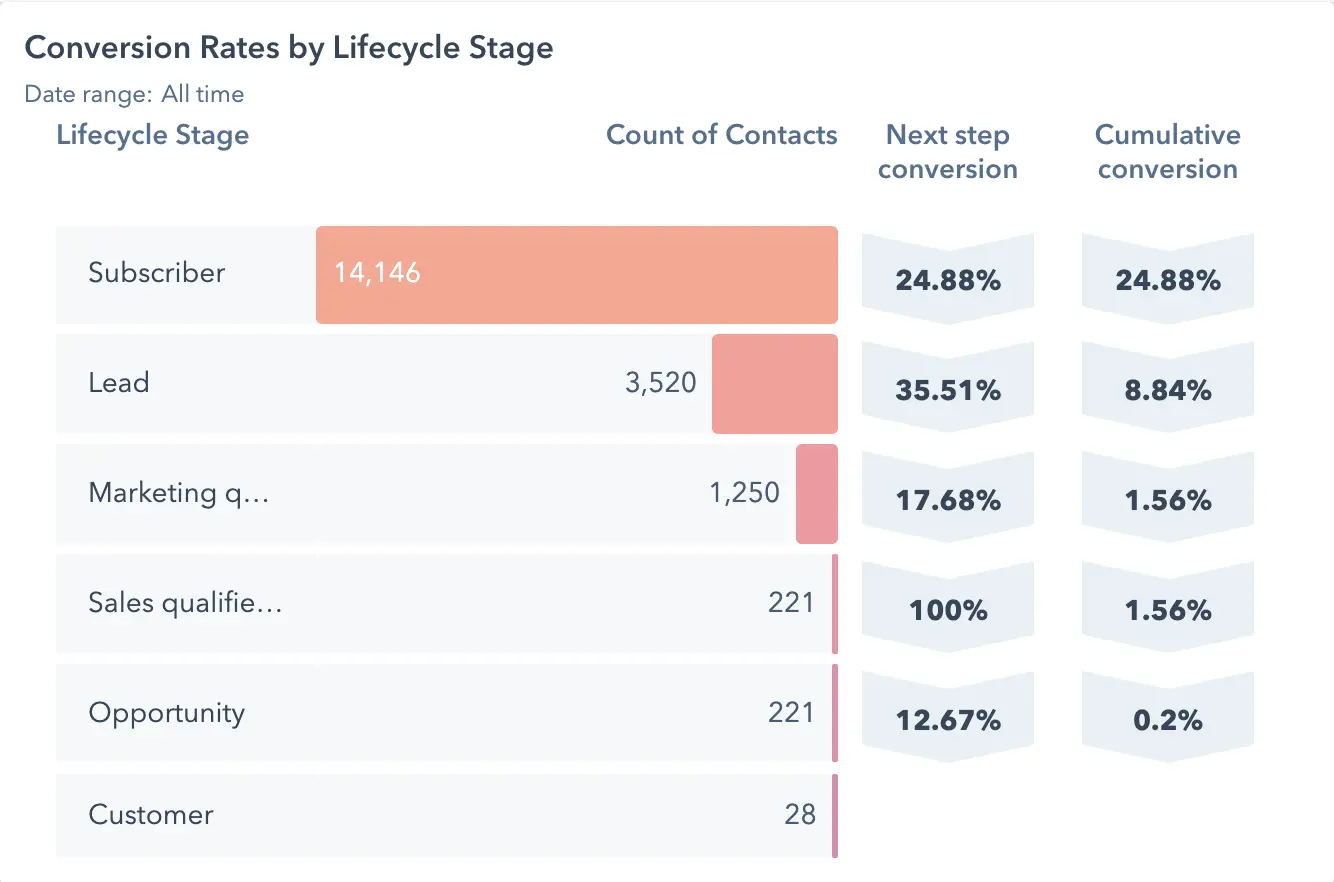
3. Average sale amount and time to close by original source - Average sale amount and average time to close are two common metrics sales teams closely monitor. Marketers need to focus on this data too, especially when there are significant variances between channels.
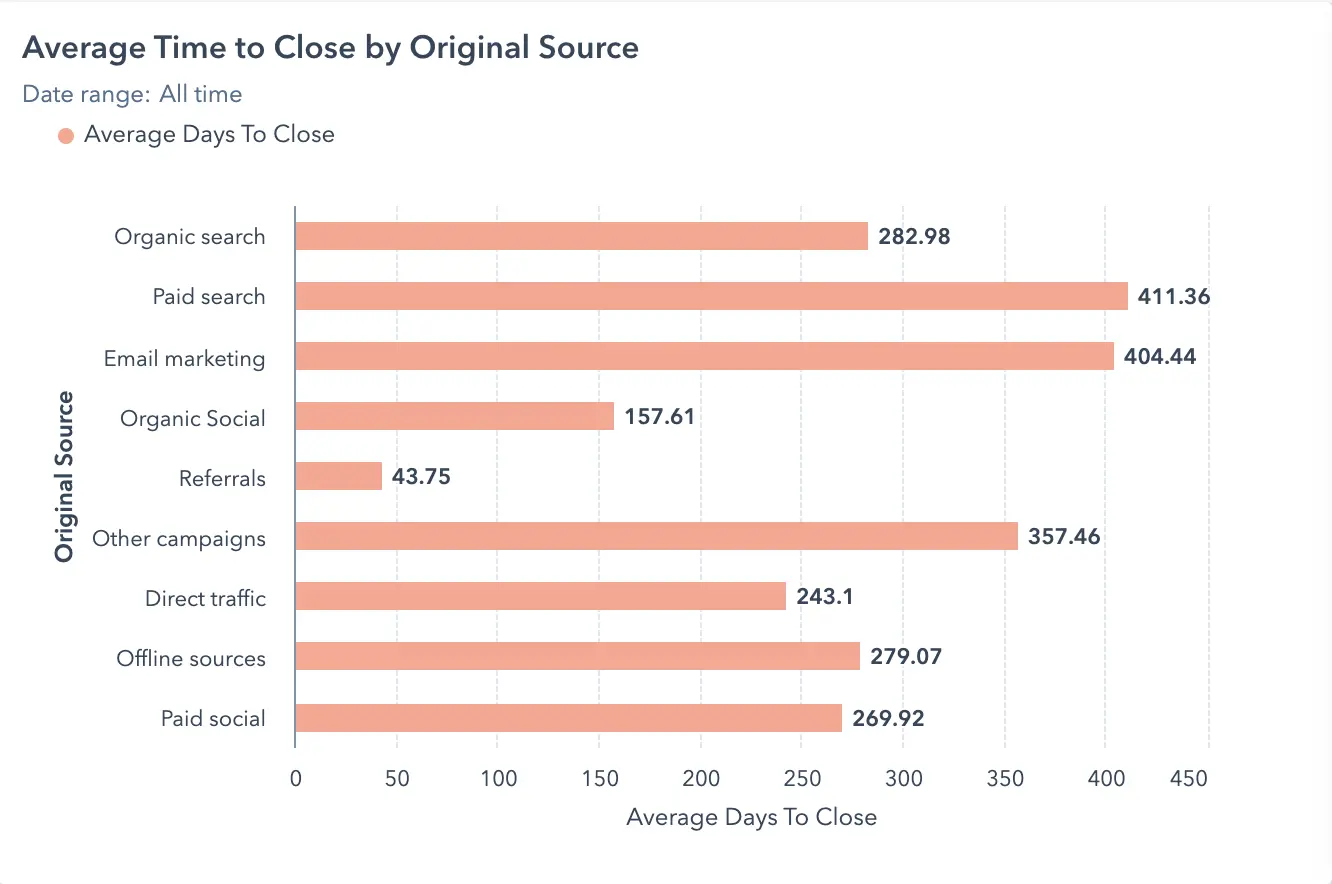
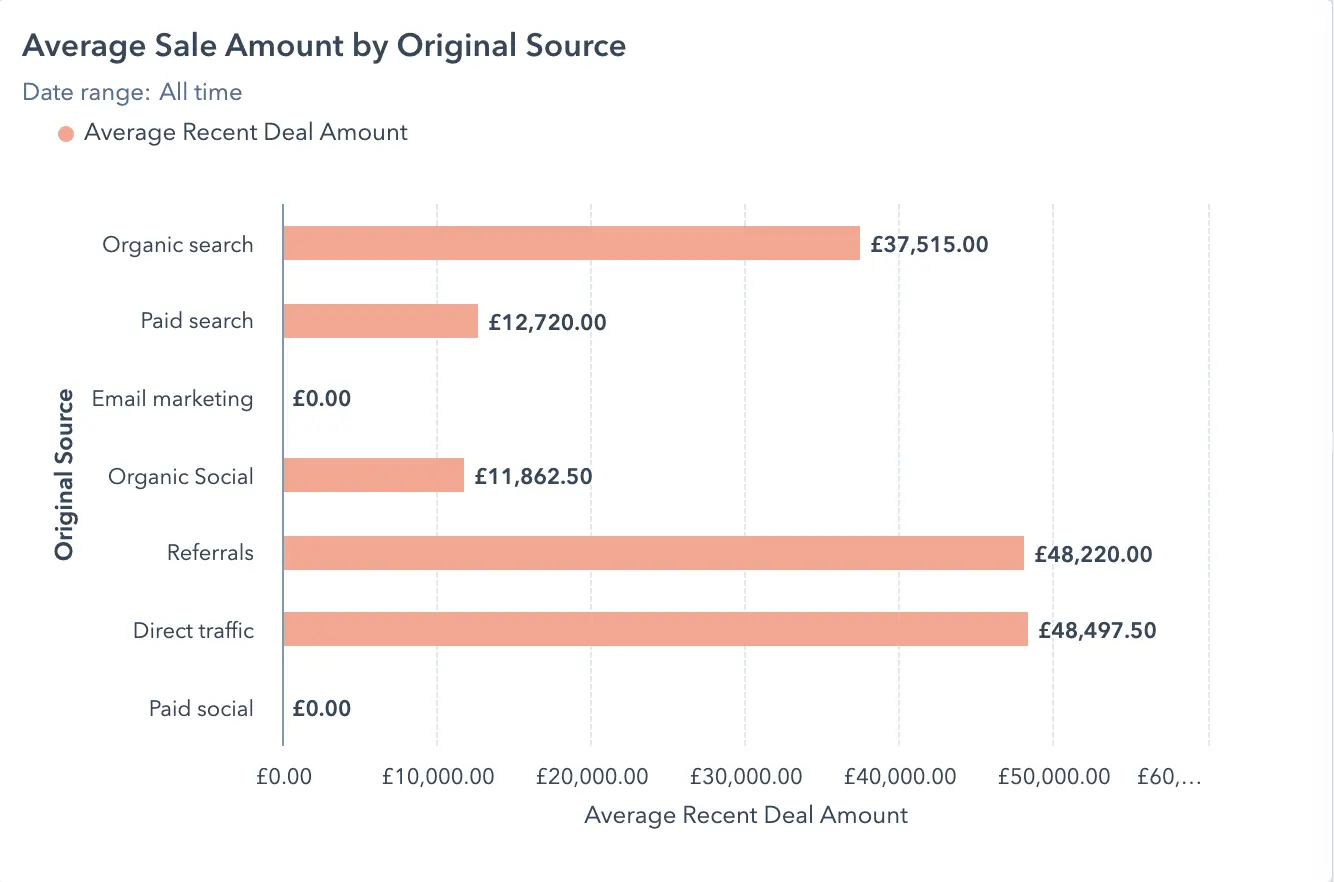
4. Average number of page visits per conversion - Your marketing and sales teams need to know how often your customers and leads are engaging with your website before they convert or move down the funnel. Monitoring this will help you identify when and who to start a sales engagement with first.
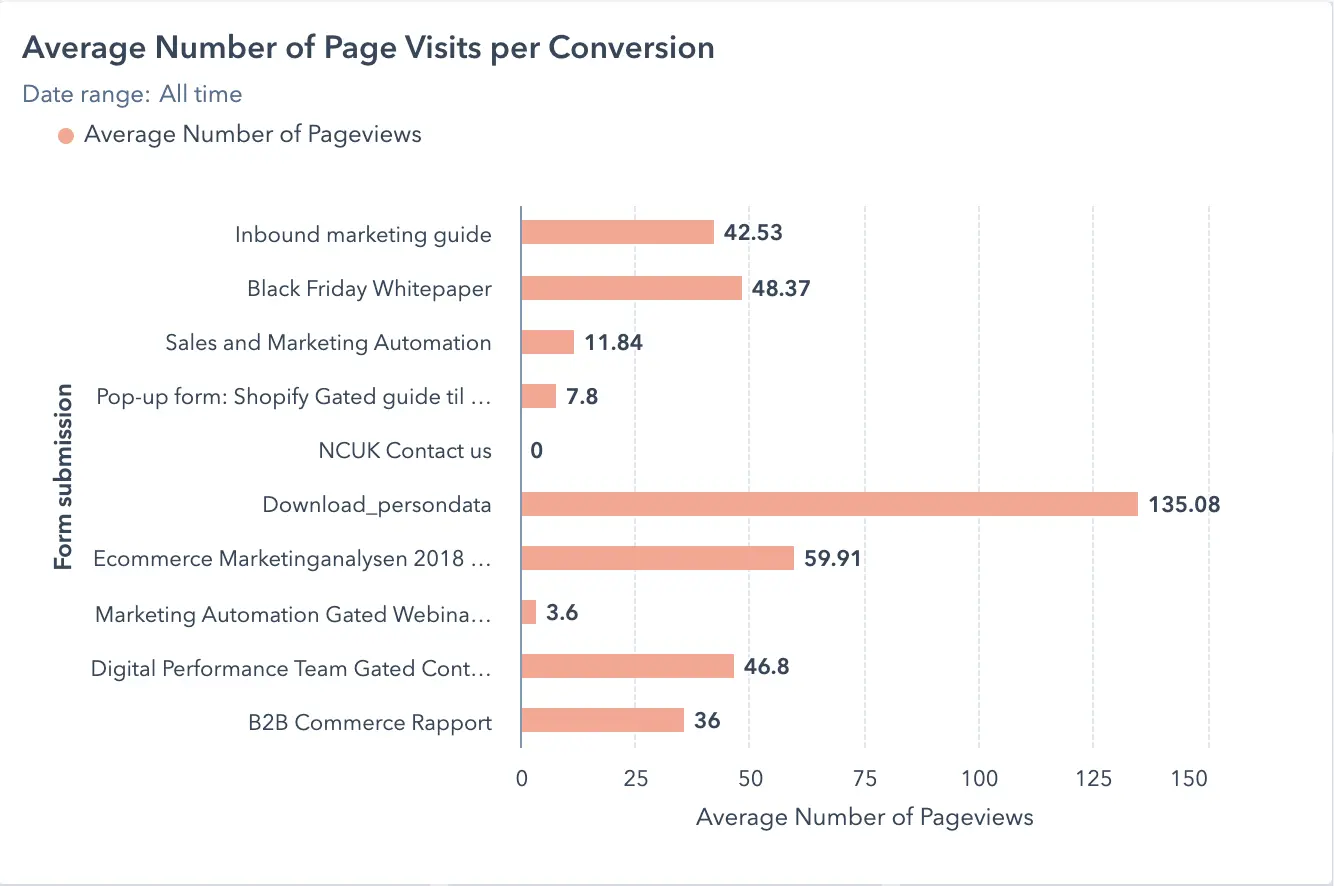
Leverage the power of automation
Another quick and easy tip for maximising your HubSpot ROI is that of leveraging the power of automation. With the workflows tool, you can automate your marketing, sales, and service processes to make your team more efficient. HubSpot has made this easy for you to get started by providing a series of pre-built workflows for you to choose from. If you’re new to automation and have not used the workflow tool in HubSpot, we strongly recommend starting small by using a few of HubSpot’s workflow templates, which can make an otherwise complex workflow build, relatively simple.
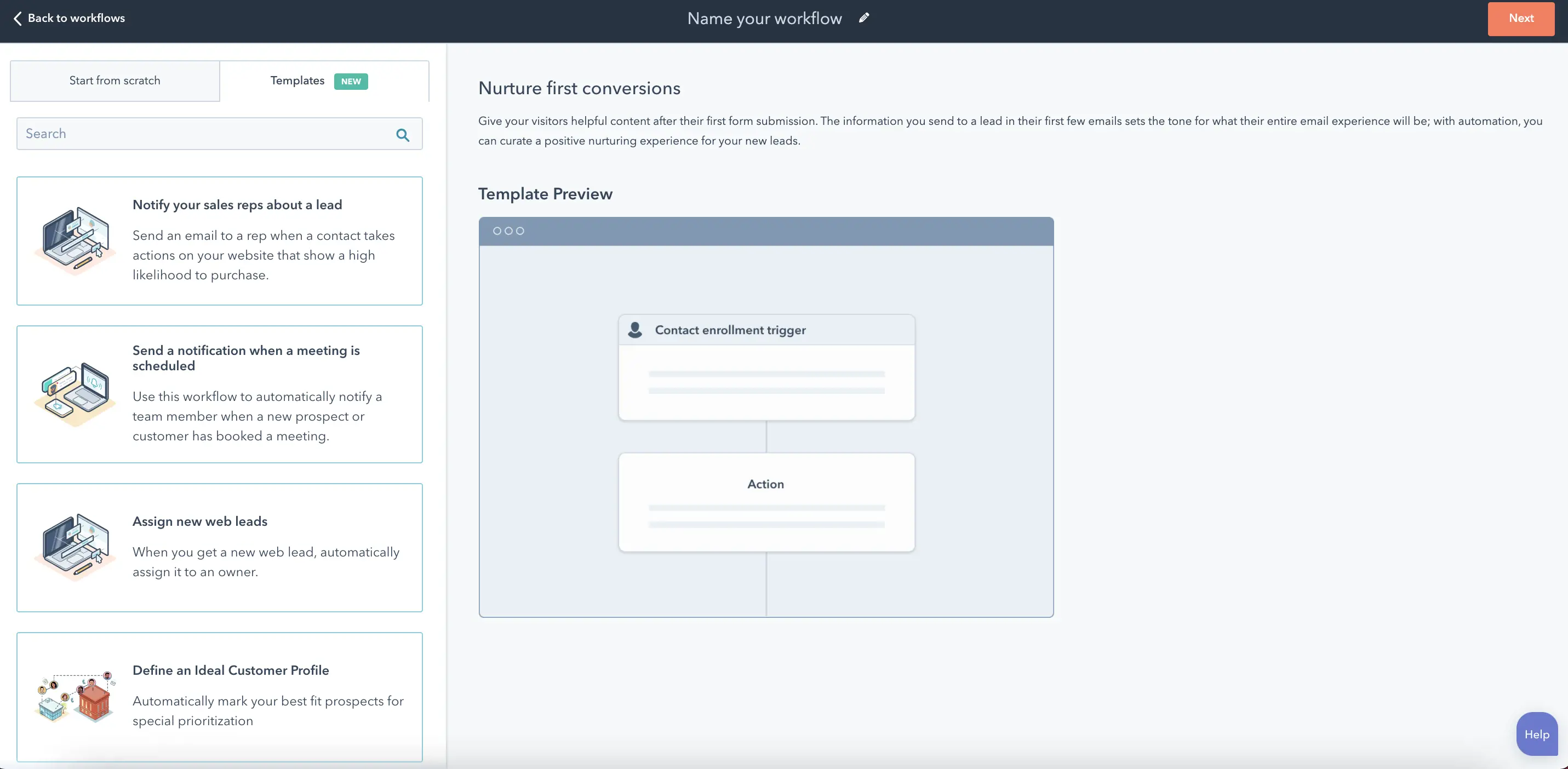
You’ll find the following workflow templates ready for you to set up in your HubSpot portal:
- Nurture first conversions - Give your visitors helpful content after their first form submission. The information you send to a lead in their first few emails sets the tone for what their entire email experience will be; with automation, you can curate a positive nurturing experience for your new leads.
- Notify your sales team about a new lead - Sometimes, a contact who's already in your system doesn't need to be nurtured before purchasing. Maybe they heard an amazing review from a friend or saw an ad that convinced them that they need your product or services. When this happens, you want representatives to be proactive and not miss out on the opportunity to close a deal.
- Send a notification when a meeting is scheduled - Use this workflow to automatically notify a team member when a new prospect or customer has booked a meeting.
- Assign new website leads – When you get a new website lead, automatically assign it to an owner
- Welcome new blog subscribers - Send a welcome email to a new blog or newsletter subscriber to make a good first impression on behalf of your brand. You can use your email to thank contacts for subscribing and remind them that they'll get out of reading your blog. It's also a great way to promote your blog's best-performing articles or other offers
Data management – cleaning and organising
If you want to make your investment in the HubSpot platform worthwhile, improving the accuracy, organisation and overall health of your database is one of the most important steps you can take and is often the most overlooked step by many businesses.
Some of the tasks that are involved in a full data cleaning process include:
- Removing bad data
- Fixing spelling and syntax errors
- Standardising formatting across records
- Filling empty fields
- Identifying and merging or deleting duplicate data
Looking for what you can do to improve your current database? Here are a few steps you can take to routinely clean up your data in the HubSpot platform:
- Examine your data and identify what you should clean up – check for hard bounced contacts and unsubscribed contacts and consider removing them from HubSpot. Find and merge duplicates. Filter contacts who have not engaged with any of your marketing activities.
- Standardise how you will input your data into HubSpot – this can be achieved by setting specific fields when manually creating contacts, companies or deals. This same strategy can be applied to form submissions by including key fields that your team values.
- Create a data cleaning schedule and nominate who is responsible for your clean-up maintenance.
Drive user adoption with bespoke user training
The number one reason why most businesses are not maximising their HubSpot investment is user adoption. To get the most out of your team whilst using HubSpot, you need their buy-in so they use the platform the way it was intended to be used. If you’ve noticed a lack of tool usage by your team, we’d recommend running a few bespoke one-on-one training sessions to educate them on the tool, how it can solve their day-to-day and ultimately help them do their job better.
Whilst HubSpot offers several free certifications through their HubSpot academy, which are incredibly useful, we’ve experienced greater success by encouraging user adoption through one-on-one training rather than by encouraging them to take a certification in their spare time.
Conduct a HubSpot portal audit
Another way to take stock of the health of your HubSpot portal is that of a HubSpot portal audit. A HubSpot portal audit is the process of reviewing, cleaning up and optimising your platform. Whether you’re a new or HubSpot power user, this process will help you identify opportunities for improvement and ensure that you have the proper technical foundation set up. Overall, a HubSpot portal audit will help you make the most out of your platform investment.
Don’t have the time or in-house capabilities to conduct an in-depth HubSpot portal audit? Don’t worry, we are offering a free HubSpot portal audit for a limited time only. Request yours here.
Partner with a HubSpot Certified Agency
Whilst the strategies, tactics and tips listed above are bound to help you increase your return on HubSpot investment, for the best ROI results we recommend partnering with a certified HubSpot solutions partner. Being a HubSpot certified partner means that an agency has proven they have the understanding and skills necessary to make clients successful using HubSpot. To earn their HubSpot partner certification, agencies must pass several courses, exams and a rigorous practicum that demonstrates their proficiency in the HubSpot software
A certified HubSpot agency can help you with:
- Lead management process development
- Complex integrations
- Inbound marketing strategy
- Content marketing and creation
- Buyer persona development
- Sales enablement
- Template builds (landing page, thank you page, website page and email)
- Technical and ongoing HubSpot support
- HubSpot training and change management
Conclusion
HubSpot is a powerful tech stack that can help you accelerate the growth of your business. It is a one-stop shop for all of your automation needs and has built-in tools to be able to track and evaluate your ROI.
However, before you can make the most out of your investment in HubSpot’s technology, it is important to get organised, align your teams and their goals, and clean up your database.
If you’re not seeing the results you’ve expected to see with your HubSpot investment, it may be worth conducting an in-depth HubSpot portal audit or engaging a certified HubSpot agency.


